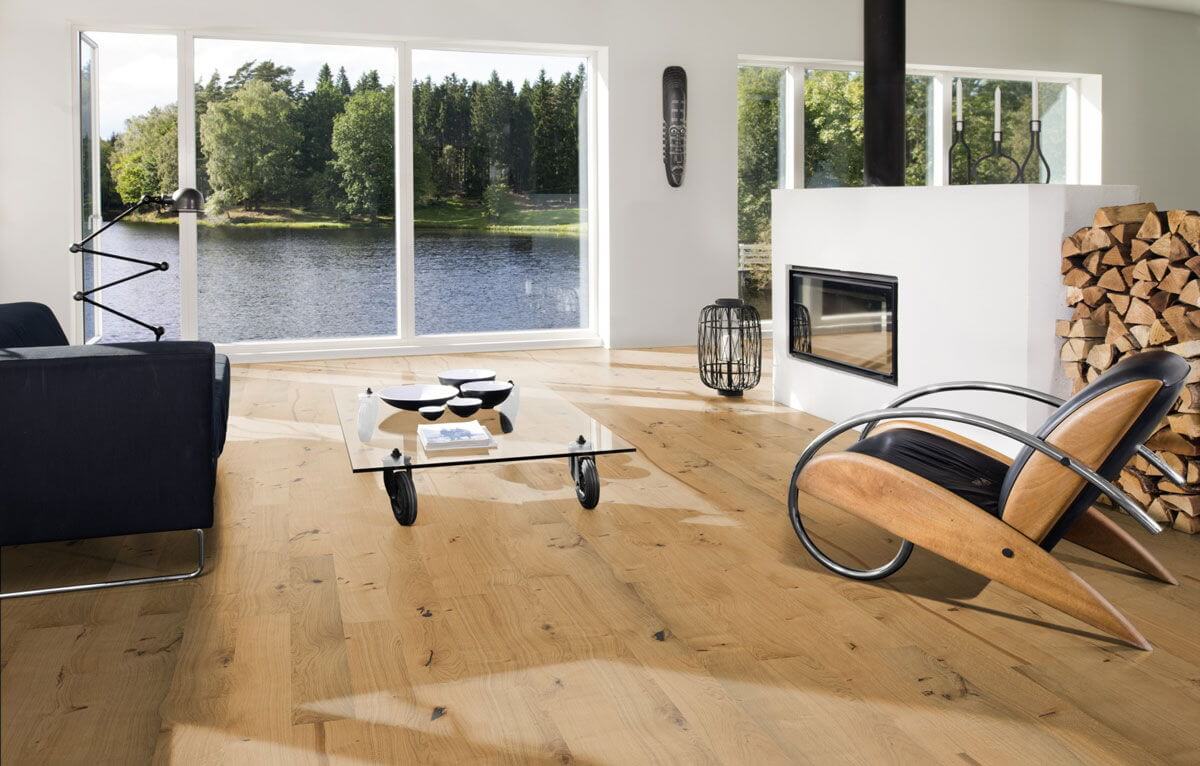
Author, Written by: P. Hirani (Wood flooring Expert)
As eco-conscious living becomes the norm, the flooring industry is undergoing a major transformation. Homeowners and businesses alike are demanding greener, more sustainable materials, and manufacturers are responding with innovative solutions. From carbon-neutral production to biodegradable flooring, the next decade will bring flooring that’s not only beautiful but also better for the planet.
So, what’s next in sustainable flooring? Here’s a look at the trends set to shape the future.
1. Carbon-Neutral & Negative Carbon Flooring 🌱
One of the biggest shifts in the industry is the push for carbon-neutral and even carbon-negative flooring options. Brands are investing in eco-friendly manufacturing processes, sustainable sourcing, and carbon offset programs to minimize environmental impact.
✔ Cork and bamboo flooring are naturally sustainable, with fast regrowth cycles.
✔ Engineered wood with FSC certification ensures responsible harvesting.
✔ Carbon-negative flooring (like hemp-based materials) actually absorbs more CO₂ than it produces.
🔹 What’s next? Flooring that contributes to carbon sequestration, helping to reduce global emissions.
2. Recycled & Upcycled Materials ♻️
Expect to see a rise in flooring made from repurposed materials, reducing waste while giving discarded products a second life.
✔ Reclaimed wood flooring—sourced from old barns and buildings—adds character while reducing deforestation.
✔ Vinyl and laminate made from post-consumer waste reduces plastic pollution.
✔ Carpet tiles from recycled plastic bottles make for a stylish yet eco-friendly choice.
🔹 What’s next? Flooring made from ocean plastics and industrial waste to tackle pollution.
3. Biodegradable & Compostable Flooring 🍂
Sustainability is no longer just about recycling—it’s also about designing materials that naturally return to the earth. Biodegradable flooring options will become more mainstream in the coming years.
✔ Linoleum made from natural materials (flax, cork dust, and jute) is making a strong comeback.
✔ Hempcrete flooring, a bio-composite material, offers durability and sustainability.
✔ Bio-based resins in engineered floors allow for full decomposition at the end of their lifespan.
🔹 What’s next? Flooring that naturally decomposes without releasing toxins, making disposal guilt-free.
4. Smart Sustainable Flooring: Energy-Generating Floors ⚡
Imagine if your flooring could produce energy just by walking on it. The concept of kinetic flooring is gaining momentum, with materials that capture the energy of foot traffic and convert it into usable electricity.
✔ Piezoelectric tiles generate small amounts of electricity when stepped on.
✔ Thermal flooring systems harness body heat and ambient temperature to optimize home energy use.
✔ Solar-reactive surfaces could one day integrate solar technology into flooring materials.
🔹 What’s next? Homes that are partially powered by flooring-based energy solutions.
5. Non-Toxic & Low-VOC Flooring for Better Indoor Air Quality 🌿
Sustainability isn’t just about the environment—it’s also about creating healthier indoor spaces. More flooring brands are moving toward low-VOC (volatile organic compound) materials that improve air quality and reduce toxins.
✔ Water-based finishes replace chemical-heavy coatings.
✔ Formaldehyde-free adhesives reduce harmful off-gassing.
✔ Natural fiber carpets (like wool and sisal) offer a chemical-free alternative.
🔹 What’s next? Flooring that actively purifies the air, removing allergens and pollutants.
6. Sustainable Manufacturing & Ethical Sourcing 🌎
Beyond the materials themselves, flooring manufacturers are embracing eco-friendly production methods. Sustainable harvesting, ethical labor practices, and reduced water usage are all becoming key industry standards.
✔ Certifications like FSC, GreenGuard, and Cradle to Cradle help consumers choose responsibly sourced flooring.
✔ Waterless dyeing techniques in carpet and tile manufacturing reduce water waste.
✔ Factories powered by renewable energy further minimize carbon footprints.
🔹 What’s next? Flooring brands will be expected to provide full transparency on their supply chains, ensuring ethical and eco-friendly practices.
A More Sustainable Future for Flooring
The next decade will bring smarter, greener, and healthier flooring solutions. Whether it’s biodegradable materials, energy-generating surfaces, or non-toxic finishes, the industry is moving toward a more sustainable and responsible future.
👉 Looking to make an eco-friendly flooring choice? Keep an eye on these trends and invest in a floor that’s good for both your home and the planet! 🌍✨
About Author:
Peter H. is a flooring product expert who knows all about different types of flooring materials. He shares his knowledge in blogs to help readers make the best choices for their spaces.
